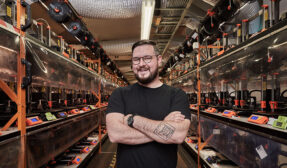 Sustainability is a topic that resonates across various fields of human activities. Doing business while taking the environmental and societal aspects into account is becoming the norm. Honestly, at Prusa Research, we have not yet expressly addressed this issue. We’ve simply done the things we think are right, without labeling them as sustainable. Just the fact that our printers are upgradeable is pretty uncommon in the age of “disposable” electronics. Likewise, the fact that all the parts you find on our printers have a purpose and are there not just for decoration is a natural result of our design thinking. After all, 3D printing itself is already helping sustainability by design. I’m sure you’ll also remember the 3D printing community’s help during the early days of the Covid pandemic when we locally produced scarce protective gear for healthcare workers. We also recently introduced PLA and PETG Prusaments, made from our own manufacturing waste.
Sustainability is a topic that resonates across various fields of human activities. Doing business while taking the environmental and societal aspects into account is becoming the norm. Honestly, at Prusa Research, we have not yet expressly addressed this issue. We’ve simply done the things we think are right, without labeling them as sustainable. Just the fact that our printers are upgradeable is pretty uncommon in the age of “disposable” electronics. Likewise, the fact that all the parts you find on our printers have a purpose and are there not just for decoration is a natural result of our design thinking. After all, 3D printing itself is already helping sustainability by design. I’m sure you’ll also remember the 3D printing community’s help during the early days of the Covid pandemic when we locally produced scarce protective gear for healthcare workers. We also recently introduced PLA and PETG Prusaments, made from our own manufacturing waste.
However, by the end of last summer, I finally decided that we want to clearly focus on sustainability, throughout the whole company. Why? First and foremost, we have always enjoyed doing things with a positive spin and we care about the environment in which we make business. At the same time, I see room for innovation and further development of the company.
I am aware that this is not an easy topic. We are struggling with the rising prices of practically everything nowadays. Getting the right components to produce our printers on time and in the required quality is often a superhuman feat, therefore we have to accept that not everything can be implemented as quickly as we would like. Still, I believe that thinking about sustainability in a broader context and with a longer view is worthwhile and will pay off in the end, not only for us but for the community as a whole.
Our new colleague Vladimír Víšek, who is in charge of sustainability at our company, will explain the details. I will appreciate your feedback and ideas!
Happy printing,
Josef Prusa
We kicked off the topic of sustainability with an internal survey, asking everyone in the company how they perceive the issue, how they see the impact of our business on the environment, and what are their thoughts on possible improvements. In total, we received 137 suggestions and ideas, which we used to draw the main three ‘pillars’ of our own sustainability agenda.
Also, we collectively agreed that we wanted to be as honest as possible. We do not claim that we are a super sustainable company and that “sustainability is in our DNA”, as per the current fashion. 🙂 We want to communicate transparently and explain all our ongoing efforts, whether they are successful or not. And to be honest, we would like to hear from you if you like our plans (or not) – so when you finish reading, we would be happy if you fill out a short questionnaire for us. You’ll find it at the end of this article.
We want to minimize our company’s environmental impact and introduce new, more sustainable products
Obviously, our activities have an impact on the environment. From sourcing raw materials for production, to operating the building where we develop and manufacture our printers, filaments and other products, to the way of delivering those products to you.
We don’t want to do things rashly, which is why we decided to have our company’s carbon footprint calculated, in its entirety, including the supply chain. The calculation follows an internationally recognized GHG protocol. The data will be available in about a month. We will use them to make decisions on where to aim our efforts and resources, to reduce our carbon footprint as efficiently as possible.
In the meantime, we have already adopted some energy and water-saving measures in our production, and we also try to minimize the amount of waste we produce. We are installing more efficient lighting sources or faucet aerators. We have also started to reuse printer parts more systematically, and we are also reducing waste by producing recycled filament. At the moment, we are limited by the fact that we are based in a rented building, but in a few years we will be moving to new premises, and there we can think about environmental measures right from the beginning.
In addition to the carbon footprint of our operations, we want to find out what impact our products have on the environment. That’s why we started calculating Life Cycle Assessments (LCA) for our printers and Prusament products. The first data we have is an LCA comparing the production of our Prusament PLA and PETG from virgin and recycled material. As a result, we know that using waste from our own production to make recycled Prusament has a 57% lower carbon footprint than using virgin granulate.
The LCA for the Original Prusa MK3S+ will be ready during the summer. The data will show us the environmental impact of the production of the printer, breaking it down into its individual components. We will use the results in the development of our new printers. Our goal is to bring new products to market that are not only better than their predecessors, but also have a lower environmental impact in their category.
We also adopted measures related to transport and packaging. Together with our shipping partners, we are also working on more environmentally friendly means of transport. You can already notice on our e-shop a “DHL GoGreen” option – if you choose it, DHL will offset the carbon footprint of your shipment.
From mid-2021 we pack printers into sturdier boxes. They are more resistant to water damage which eliminates the need to wrap them in multiple layers of plastic film. The boxes can be recycled after use and are also FSC certified.
In this context, we are often asked why Prusament spools are not made entirely from recycled paper. Four years ago, when we started producing Prusament, we already considered this option, but in the end, we made a different choice for many good reasons. The current polycarbonate fronts hold their shape properly, allow us to get the perfect winding you expect from Prusament, and bring great advantages to the manufacturing process. They make the spools easy to disassemble and therefore reusable. And because of how closely we monitor the quality of the filament we produce (diameter, color consistency, and other factors), emptying failed spools and reusing them is quite common. So, instead of going the cardboard front route, we continue to seek improvements to the current solution. Of course, we are also looking for other ways to produce more ecological while maintaining quality.
So far we have achieved that both the paper and plastic parts of the spools are made of 100% recycled material. We have also considered making the spools returnable to us, but given our global market, it doesn’t make any ecological sense to ship the spools halfway across the planet.
Fair relations with colleagues and business partners
The sustainability topic also includes a safe working environment and good relationships within the team. HR department measures job satisfaction through regular surveys and any shortcomings are quickly addressed. Our goal is to make all our colleagues happy and enjoy their work.
A new topic for us is working conditions in the supply chain. We have suppliers from all over the world, most of them are from European Union, USA and UK. We want to know and influence the conditions in which the components for our printers are produced. We have opened a discussion on this topic with our largest suppliers and have been pleasantly surprised to find that many of them have well-developed processes in this regard. For others it’s still a new thing – however, we will insist and look for improvements together.
And last but not least – we want to continue to offer you products that can be easily upgraded or repaired. Our 3D printers can be disassembled and have every single part replaced. Any user can repair the printer themselves and we have all the spare parts available in our e-shop. You can print some of the parts yourself or have them printed by other community members. We issue software and hardware upgrades for our 3D printers to extend their life and prevent obsolescence.
We want to help solve today’s problems through 3D printing
Does this seem too naive to you? We don’t think so! 3D printing is a great technology and has a huge potential. For example, our colleagues in the PrusaLab makerspace are doing great work – read how they helped make sports equipment for a disabled boccia player or haptic aids for the blind.
We have also recently started supporting socially beneficial 3D printing projects in The Gambia. In collaboration with Make3D and other organizations, we help organize 3D printing workshops and educational programs there. Another interesting application of 3D printing is limb braces. We have taken this project a step further with the help of surgeons from the Czech Republic, so that it can be used effectively for people wounded in the war in Ukraine (and elsewhere).
We are pleased to inspire so many people to work on such interesting projects. Feel free to take part, too!. A good first step would be joining one of the themed contests on Printables.com. We would also appreciate it if you contribute to developing the topic of sustainability with your own suggestions or projects. Let us know and we can get started together.
Finally, we would like get back to the very beginning of our discussion on sustainability. The next logical step after we have asked inside the company is to ask for your opinion directly. That’s why, we have prepared a short questionnaire where you can give your feedback on our efforts. Thank you in advance for filling this up!








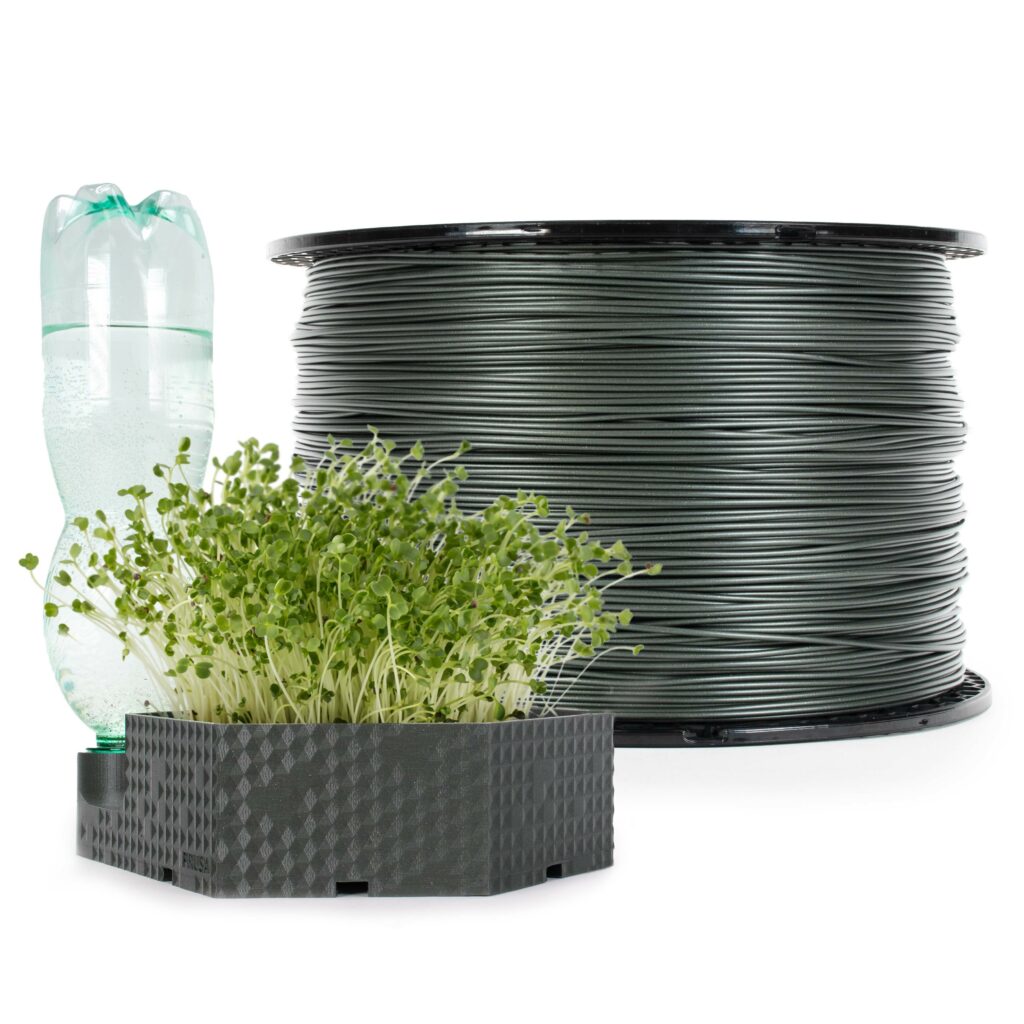
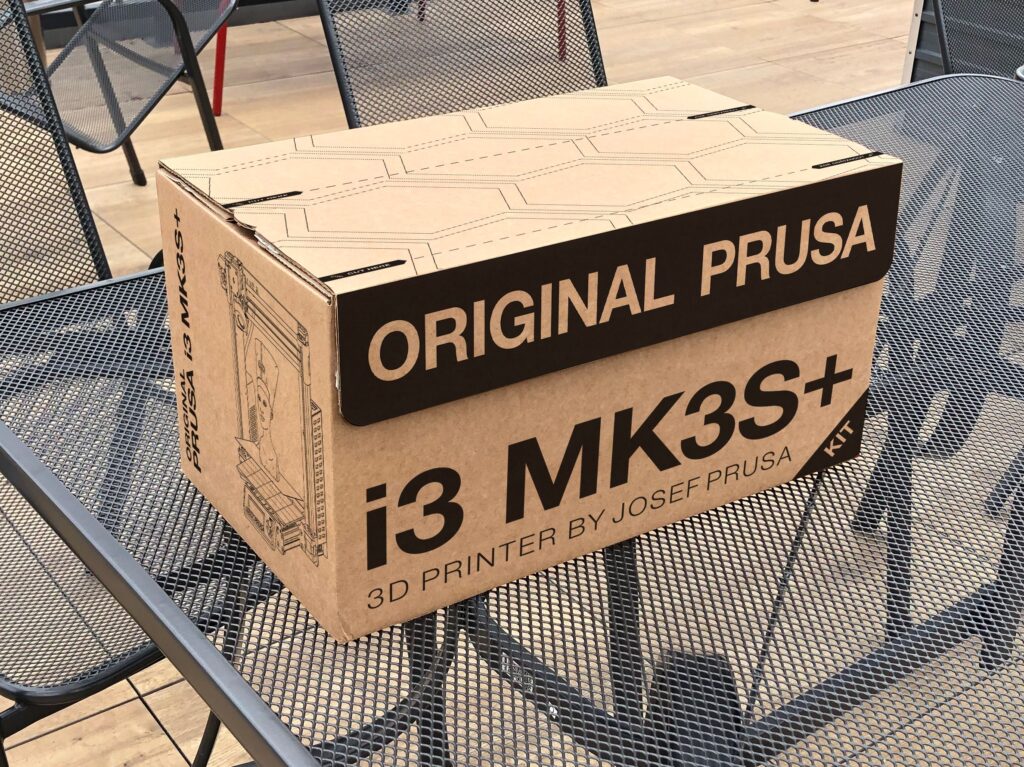
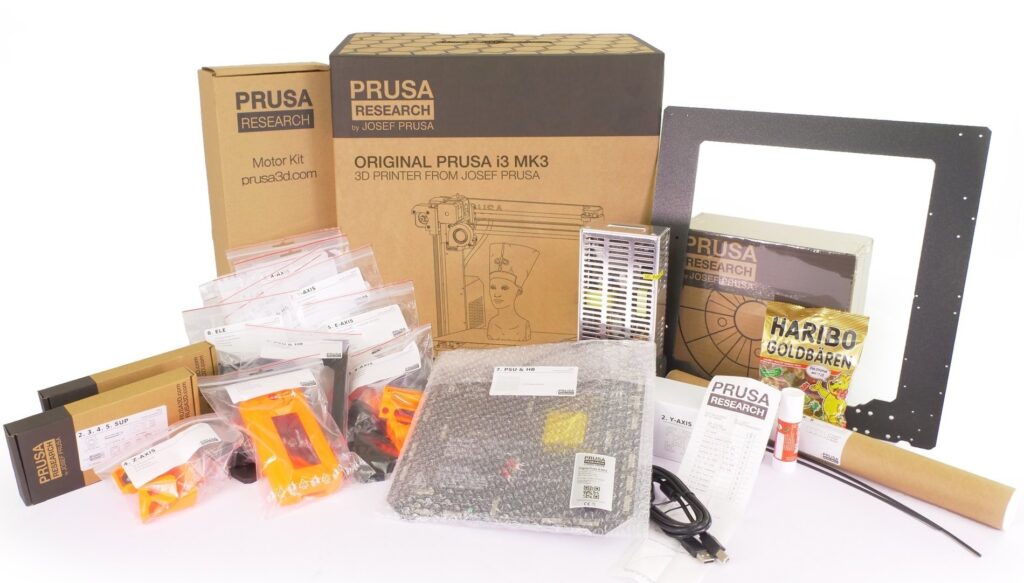
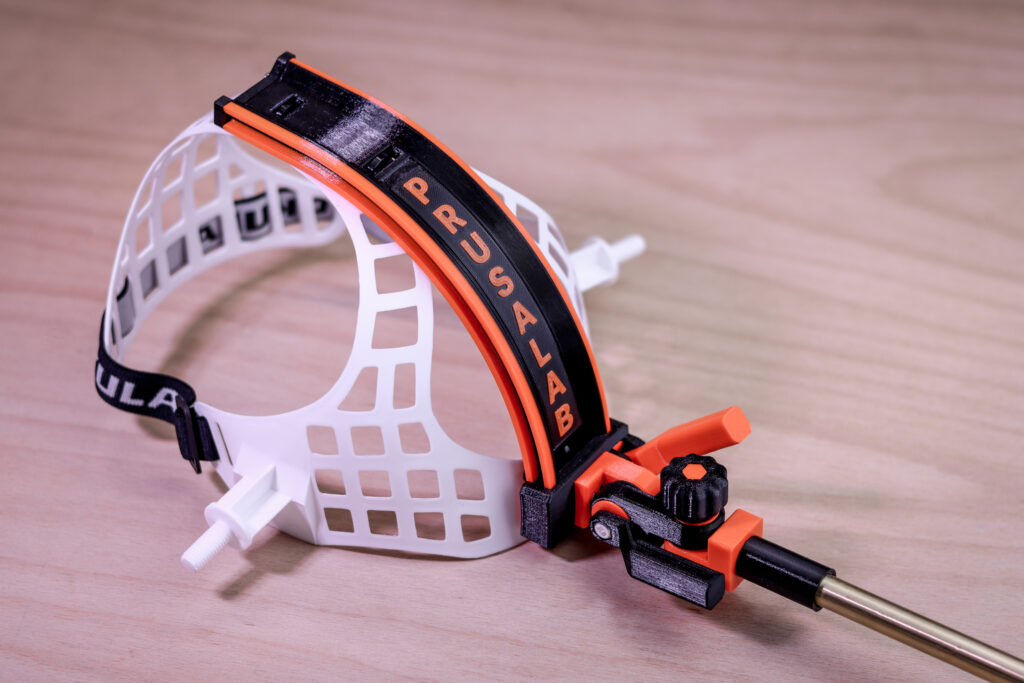
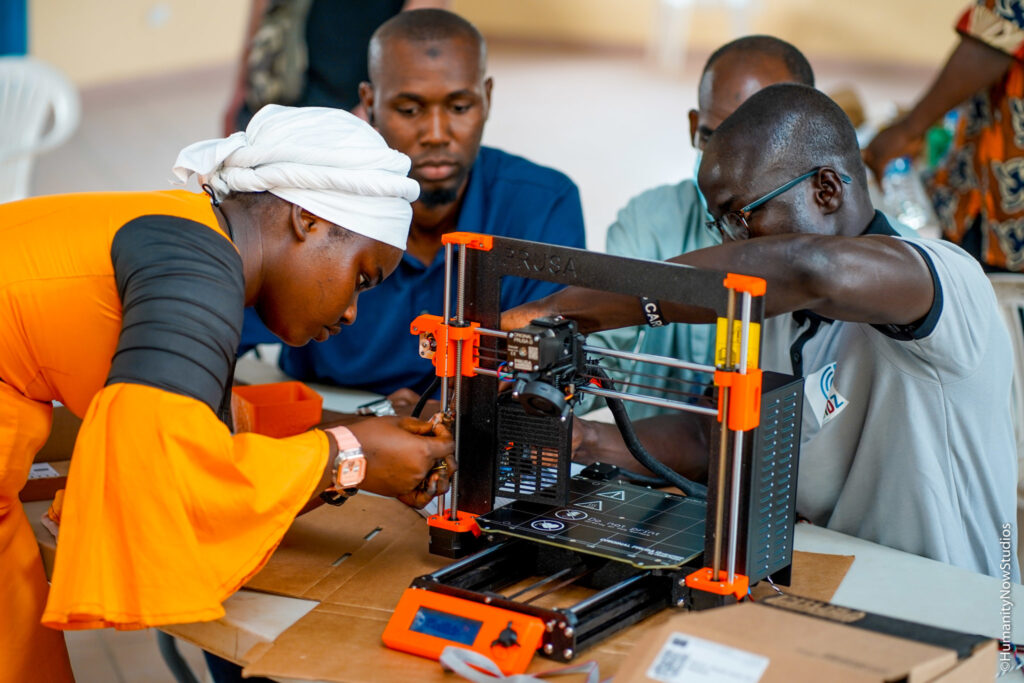
Something that I think would be great for sustainability is to be able to return spools to any filament company. Has there been any discussion of partnering with companies like Atomic, Microcenter, or international companies to standardize a printer spool dimension so we can send our spools to the nearest company for reuse?
I totally agree, maybe could the endrolls be made of sturdy cardboard, too?
Hey ummm why don’t you guys invest in making a pullstrution machine. It turns plastic bottles into usable filament without the hassle of grinding down the plastic. I would buy one but the only one being sold is from a guy in Russia and well I’m in America so it’s not looking like I’m gonna get it any time soon.
I gues the most that could be done is by getring rid of the plastik endrolls on Prusament.
Something like the DasFilament Refill.
https://www.printables.com/model/30047-masterspool-das-filament-edition-v3-optimized-prin
We ship tonnes of virgin plastic and machines that consume indefinitely more *but* we’ve swapped to LED lighting around the factory.
Seems like this intraspection is arriving pretty late to the party.
I don’t buy prusament, I only buy recycled filament on cardboard spools from Filamentive (and this still doesn’t go far enough). The quality is superior to most other brands I’ve used in the nine years I’ve been printing and the cardboard spools don’t cause nozzle jams (just fit an oiler if it really concerns you).
Just use more injection molding plastic. It uses 1/100 of energy compared to 3D printing. At your scale it totally makes sense! also soon to be seen energy price spike will kill you with current 3D printers farm. You could be much more energy efficient if you use injection molding on some parts of your 3D printers. I don’t mind if my printer have more of such parts. My Mini already have front and back rail holders produced on injection machine.
Hello!
Parking striping is a relatively simple process that is used to delineate parking spaces. There are many different types of striping available to the end user, from simple paint lines to intricate graphics. The key to successful parking striping is knowing the type of parking striping desired by your clients and then choosing the appropriate material and color scheme that will best suit their needs. Additionally, parking striping dallas are used in tandem with other forms of signage, such as overhead signs or ground signs. They can be used alone or in conjunction with other forms of signage depending on the client’s specifications.
A great blog
Gateway Express Clinic is your dependable destination for <a href="https://gatewayexpressclinic.com/primary-care/">primary care physician</a>. Our devoted team is committed to offering efficient and compassionate healthcare in a convenient, accessible setting. Your health and well-being are our utmost concern.